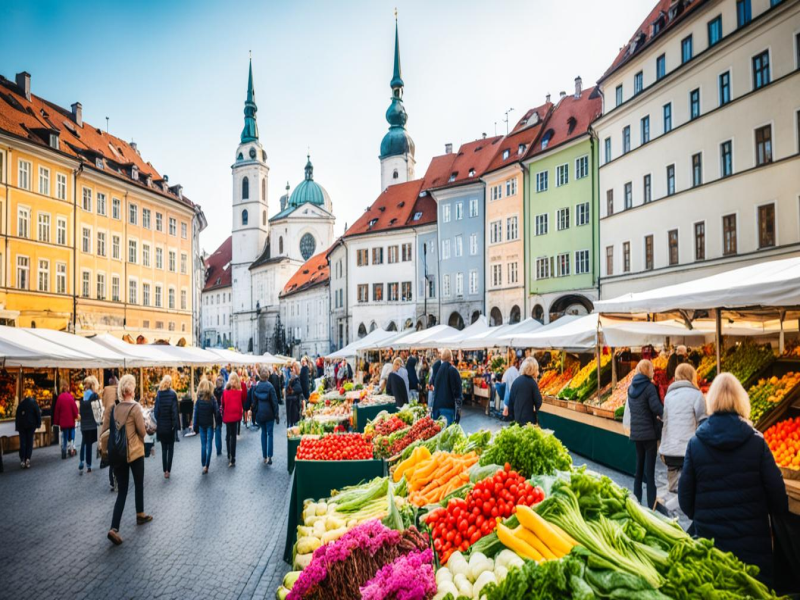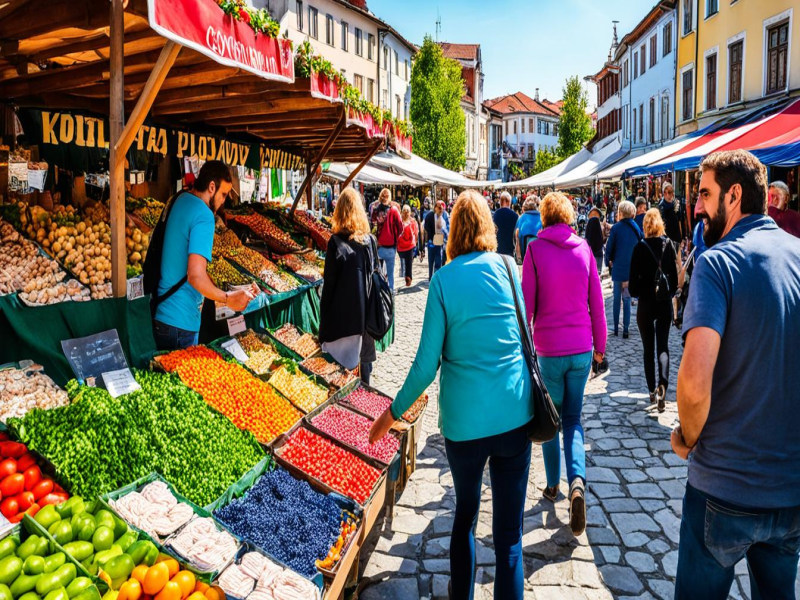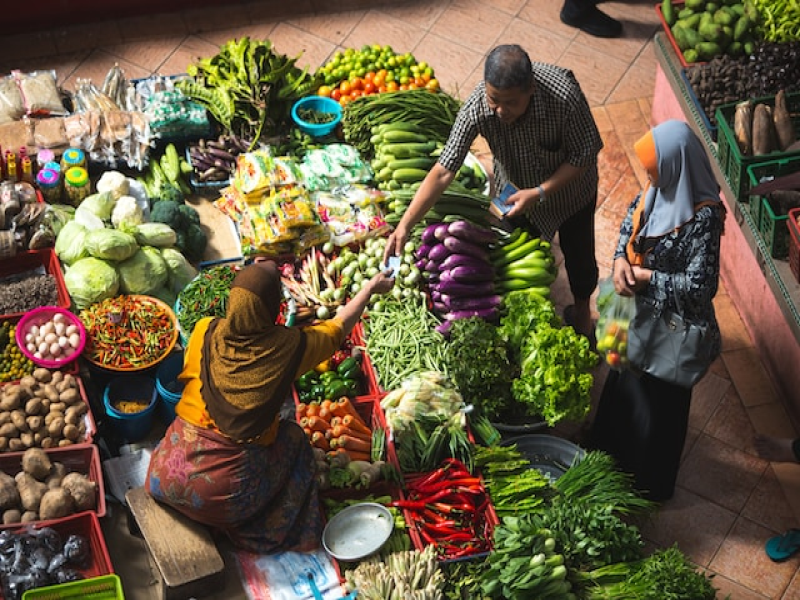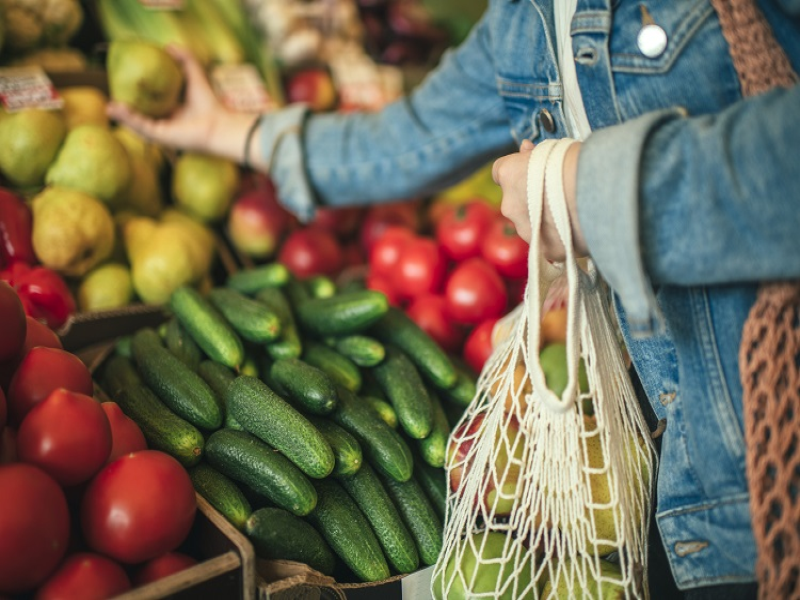The importance of sustainability with respect to food choices have been increasingly gaining recognition over the last few years. Consumers desire for fresh, locally sourced and “humm” food is growing faster than millennials love for avocado toast (by the way Baby Boomers eat more avocados) — not because it’s healthy(trend #2), but also to help sustain local economies & environment. Predictably, this has sparked a big uptick in the number of sustainable food markets. The ironic part is that people tend to think healthy and vegetarian food is really expensive but in reality it can be much cheaper than eating meat on daily bases.
Well buckle up, I am here to debunk that myth and help you learn how to shop at sustainable food markets without breaking the bank. We will go through some techniques and tricks to find cheaper alternatives, show you types of more sustainable markets; give you valuable information so that your shopping is fun and costs less.

Understanding Sustainable Food Markets
But let’s clarify what we mean by affordable, sustainable food markets before we begin to thoughtfully weed out the differences between these grocers and standard supermarkets.
Sustainable Food Markets. What Does This Mean?
Sustainable food markets sell foods that are locally sourced, in season and made using sustainable and ethical practices. It fosters direct relationships between consumers and growers; supports small-scale farmers in a changing climate and promotes biodiversity, healthy soils, ethical production systems all leading way to a fairer, more sustainable food system. Their sales include fresh fruit and vegetables, meats and seafood, dairy products (cheese) bakery goods as well as other consumables or crafts with common points among organic farming.
There are several differences between those markets and a regular supermarket:
- Connect with Producers: In the aim to have transparent markets, knowing your farmer and having direct connection with producers provides a personalized story along connecting locals.. No middle man, straight from the grower.
- Emphasizing Seasonality and Locality: Markets that sell produce which is being grown in the region or fruits and vegetables specific to the season help keep a check on carbon emissions from transportation.
- Sustainability: With a focus on sustainability, sustainable food markets present products which are made with environmentally accountable strategies that protect the earth, water and power.
- Support for small-scale farmers: shopping at sustainable markets supports small-scale farmers and helps keep the money in local communities.
Advantages of Shopping from Sustainable Food Markets
There are a few advantages to sustainable food markets, other than simply being able to buy great tasting sustenance that is also viewed as better for the environment.
Better-Tasting Produce While it can taste fresh, produce from further away is often taken early so that the ripening and ‘flavor development’ occurs while being shipped.
- Less Impact on the Environment: Local food production causes lower carbon emissions due to lesser transportation and packaging. Markets that operate sustainably also tend to offer minimal packaging and promote the use of reusable bags and containers.
- Local Economy: You support all the local farmers and businesses with your food dollars, which breathe life back into the wellbeing of your community.
- The Relationship You Have with Your Food and Community: Through sustainable markets, you can develop a relationship to your food and the farmers who produce it. This allows you to discover how food is grown, the times of year that certain vegetables/fruits are harvested, and even what goes into your food!
- Find New Cultural Foods: Sustainable markets tend to have more heirloom varieties, unusual products and limited-edition items than the usual supermarket.
With this overview of sustainable food markets and why you should shop there out of the way, let’s dive right into how to find good deals and make sure that your shopping is up to par.

Tips for Finding Affordable Options
While the cost of sustainable food may give the impression that it is expensive, there are many fantastic local discoveries to be made at sustainable food markets that won’t break the bank. And here we can help you with a little planning and some progressive shopping techniques! You can be in the right place at the right time… if you do a tiny bit of work ahead of time so …Fruits (fruit) prices per month. it will make a difference. Here are some tips for the latter.
Seasonal Shopping
One of the best techniques to save money at sustainable food markets is by reducing costs with frequent seasonal shopping. Seasonally available fruit is usually plentiful, which means it can also be an inexpensive commitment. It’s cheaper than going out to eat, and this way you get fresh produce that is in season for a fraction of the cost of what it would be if it wasn’t in season.
- Spring: Spring provides a variety of leafy greens, asparagus, peas & strawberries. The following are bright, colorful, and nutrient-dense choices to scout out at your local market.
- Summer – Summer is the season of plenty with an assortment of fruits and vegetables readily available. Some of the tastiest, low-cost summer foods include tomatoes, corn, zucchini, berries and melons.
- Autumn: Apples, pumpkins, squash and root vegetables are easy to find this hearty season. And the perfect time to enjoy such vibrant, flavorful produce.
- Winter: Although the pickins’ are slimmer in winter, root vegetables, winter squash and stored apples are still quite good bargains.
Besides the cost benefit, purchasing in-season means you are supporting more sustainable farming practices, and reducing the environmental impact that comes with out-of-season produce being shipped great distances to your grocery store.
Bulk Buying – Similar to territorial limitations, bulk buying is another method for buying food in a cost-effective manner. Many items can be bought in bulk if the items are non-perishable, such as grains, nuts, dried fruits, and spices. This can be done at a reduced cost per unit by purchasing from bulk bins, selling predefined quantities at a lesser per-unit cost than pre-packaged sales. That way, you buy as much as you think you can consume. Sharing with Friends and Family – To prevent buying and not consuming the quantity you purchased, consider purchasing items in bulk with friends or family members, and when one person gets tired of consuming fruits.
Proper Storage – Make sure you have plenty of storage containers and bulk food storage space. Imperfect Produce – Imperfect produce are fruits and veggies that contain minor imperfections, occasional blemishes, irregularities, and/or variations in size. While still good to eat, these fruits are heavily shunned by retailers that dispose of the waste. Many sustainable markets sell these goods at a discount, making their money back. Reducing Food Waste – it reduces food wastage, guiding against disrespect to the food chain. Nutritional Value – Just like regular produce, imperfect produce contains the same amount of nutrients needed to live healthily. Don’t be put off by the little spots that make them cheaper for you. BYO Containers and Bags.
Timing Your Visit
But the time of day you go to the market can also affect your wallet. Try going later in the day when sellers may be more inclined to cut a deal on their remaining produce to save the trip back to the farm.
Negotiating and Bartering
You sometimes can, but you should ask nicely for a discount (especially only if buying larger quantities or at the end of the market day — otherwise you might offend them). Vendors may even be willing to barter or sell at a discount to get rid of what they have left on-hand.
With the help of these tips and strategies, you will walk through sustainable food markets with a smile on your face, knowing that you can find plenty of local treasures without breaking the bank. Just an FYI, sustainable eating can be cost-effective. Everything You Wanted to Know About Sustainable Eating: how to source really amazing, fresh and delicious ethically produced food while supporting your local community and planet simply with a little planning and creativity.
Exploring Different Types of Sustainable Food Markets
Sustainable food markets Regardless of the type, all sustainable food markets offer different experiences and the chance to meet local food producers. Now, let’s take a look at the many areas of sustainable food market you can find and how they differ from one another.
Farmers’ Markets
Farmers’ markets are probably the most popular and easiest sustainable food market to find. Although exact specifications vary by market, they are generally platforms for local farmers and producers to sell fresh produce, meats, dairy products, baked goods and other artisan creations directly to consumers.
- Farmer to Consumer: Farmers’ markets establish a relationship between the consumer and the person at its literal roots. Conversations with farmers, to learn more about how they grow their food and getting he added value of knowing where your food comes from.
- Seasonal Selling: Farmers’ markets are one of the best ways to convince someone to eat with the seasons as produce is fresh, local and often only available during a few weeks when it tastes its best. Helps you eat seasonally — again, streaming down your food expenses and gives you an opportunity to taste all the lovely flavors and types each season brings to the table.
- Live Music: As mentioned earlier, farmers’ markets can feel like an event in themselves, and this is more than just a fun or convenient aspect.
CSA (Community-Supported Agriculture) Programs
Would be CSA members pay in advance for a share of the harvest to help stabilize farm income over the growing season.
How it Works: They work kind of like a subscription service, where you pay upfront at the beginning of the season and then get a weekly or bi-weekly amount of produce from the farm. This way, farmers get upfront capital and we have a stable supply of our farm products.
Benefits:
- Fresh, Seasonal Produce: Your CSA drops off a wide variety of fresh produce at your door or pick-up location.
- Support for Small Farmers: CSAs offer a reliable income for many small farmers, enabling them to stay in business and produce LOCAL food quality.
- Sustainability: Purchasing directly from the farm helps reduce carbon emissions related to transportation and packaging.
- Things to know: CSAs are pay-in-advance, buy-the-season arrangements, and your membership might mean an epic amount of kale one week while the following week brings you bushels of strawberries (and probably no kale).
Food Cooperatives
Food Co-op: Like a member-owned grocery store that specializes in bringing local and sustainable food to the neighborhood. Operating on a democratic model, co-op members vote throughout the year on the products offered and overall direction of the store.
Benefits:
- Local and Sustainable Food: Co-ops enable you to purchase alot of local and sustainable food choices under the same roof, making it easy for consumers.
- Voting Member: Being a member means you get to have your say as part of the cooperative’s decision-making processing other words, you help direct where things go.
- Competitive Prices: Food cooperatives regularly provide consumers similar prices as their corporate competitors. Often, there will be discounts or the option for bulk buying for members.
- Food cooperatives: You could also consider joining a food cooperative, although you’ll most likely need to pay a membership fee and may be asked to put in some volunteer time or take part in the operations of the coop.
Each of these types of sustainably sourced food markets has a lot to offer you will be able to find something that if well suited for you, your preferences and what is in your budget. Every market has different opportunities to meet with the local food producers, experience sustainable healthy eating and shop for farm fresh seasonal ethically grown foods.

Delving Deeper into Food Cooperatives
Food cooperatives are commonly called co-ops, and they embody a distinct model of grocery store by which the community owns and makes decisions about the business. These places support producers who farm sustainably, source locally, and use ethical practices of food production that create a sense of community and contribute to building a healthier and more equitable food system.
The Cooperative Model
Compared to the multibillion-dollar grocery store chains, which are motivated by profit, cooperatives operate in accordance with a democratic business model and membership structure: the customers/owners of the cooperative have an equal voice in how their store operates, what products it sells, and where it is going. This democratic and participatory ethos ensures the co-op remains in touch with the needs of its people.
- Memberships: Joining a food cooperative often comes with some sort of up-front fee, either one-time or yearly. Well, you can get voting rights and use other member benefits (i.e., discounts, bulk buys, or special events).
- Shared Responsibility: Most food cooperatives rely on member labor to reduce operating costs and increase feelings of community ownership. Members may have to give a committed number of volunteer hours per year finishing assignments, for example, shelving, cashiering or joining with advisory groups.
- Emphasize Local and Sustainable Food: Co-ops prioritize purchasing from local farmers and producers to support the local economy as well as reduce CO2 emissions from long-distance supply chains. In addition, they are big on sustainable as well as ethical practices with a wide variety of organic, fair-trade and just plain minimal.
Benefits of Food Cooperatives
A food cooperative benefits both its members and the whole community.
- Low Costs: Because our groceries come directly from local vendors and we make bottom-line decisions at the store level, you’re getting access to high-quality food that’s often less expensive than chain stores or traditional grocery stores. As a non-profit model, this means they can often offer better value than the difference between conventional supermarkets and factory prices.
- Co-ops Create Community Empowerment: Co-ops enable communities to make choices about their food system that are based on the needs and decisions of community values.
- Learning and Engagement: Co-ops often provide workshops, cooking classes and other learning events informing members about food, health, regionally-produced foods and sustainable practices.
- Environmental Sustainability: With a focus on local and sustainable food, co-ops ensure the lowest carbon footprint possible for your food through reducing the typical distances of transportation and supporting ecologically sound practices.
- Social Impact: Food cooperatives take social justice and equity into account by caring for food, cooperative and small-scale farmers, fair labor standards and local food access throughout the communities.
Finding Food Cooperatives
Under this scheme food cooperatives are operating in different community’s world round. If you have been looking for one in your area, then here are the ways that will help you —
- Search Online: Look up “food cooperatives near me” on Google or call a directory such as the National Cooperative Grocers Association to find out where co-ops are close by.
- Community Resources: If you want to know more about food cooperatives in your area, contact local community groups, adjacent farmers markets or sustainable food advocacy organizations.
- Word-of-Mouth: Your friends, family or even your neighbors may know of some food cooperatives in the area.
Read more and find out how to access local ag products, high-quality foods AND get involved in creating a sustainable and just food system that is vibrant AND empowering as you learn what the great world of food cooperatives has to offer.
Conclusion
All in all, food markets have so much to offer sustainably from finding hidden local treasures, supporting your community and having an environmentally friendly conscious whilst staying within then economy of your agriculture. It is rich in flavor and offers a complete shopping experience, full of specials, which allows the mandate to be fulfilled without compromising sustainable procurement.
And of course, remember: eating sustainably and healthily doesn’t have to be fancy. Eating well is the best weapon—by making smart decisions and backing local food systems; you can eat fresh & flavorful, ethical food while guaranteeing a better future for everyone.




